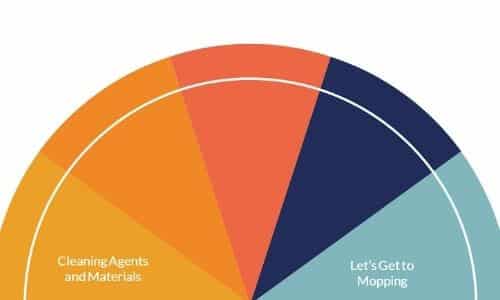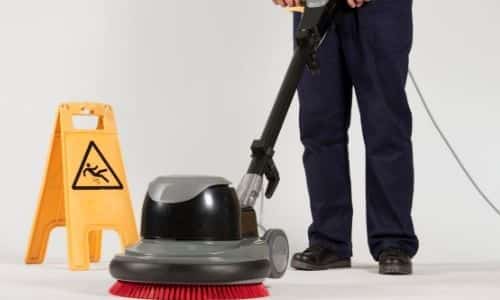When it comes to hardwood floors, polyurethane is perhaps the most used wood sealer. And that is no surprise — it is quite durable and doesn’t allow anything to get through.
However, the durability does not mean that it is immune to all kinds of scuffs and scratches. You might end up with the occasional scratch and whatnot. With that comes the question regarding how to remove scuff marks from polyurethane hardwood floors.
Yes, it is relatively easy to get scratches and scuffs off polyurethane. However, you need to know what to use and what not to use to achieve optimal results. With that and more, let’s move on to the gist of the discussion.
Getting Rid of Existing Dust and Debris from the Floor

The first step is to get rid of the dust and debris from the hardwood floor. It is absolutely crucial to do it properly. Something that a lot of folks end up doing is scratching the polyurethane layer even more.
Well, your wood floors might have a plethora of dust, sand, grit, and other elements. If you do not clean the surface properly before trying to get the scratches off, these elements are vigorously pushed against the floor while you do that.
Doing this might result in even more scratches. So, use an electrostatic dust cloth, sponge, or an electrostatic broom. These materials do an amazing job when it comes to cleaning up the dust.
You could also use a vacuum cleaner to do the initial cleanup. That can make the process easier by cleaning up most of the scratching elements from the floor. Although, sometimes, vacuuming might not be enough. You can check also how to use carpentry tools!
Rinsing and Mopping

The next approach is to bring out the wet ingredients, and we also have some pointers for that.
- Cleaning Agents and Materials
At this point, we need to clean up the floor with some form of cleaner and mop it up. You can use a usual mop made of nylon, microfiber, or anything of that sort for this purpose.
For the solution, any cleaners intended to clean wood should do the job. However, you should ensure the fact that it is pH-neutral. And as you can guess, it is going to be water-based.
But if your floor is completely feasting on dirt and grease, a mild detergent or something similar might not do the job. In that case, instead of a pH-neutral cleaner, you can opt for something that is based on alkaline water.
Regardless of what you use, make sure that you mix it with water properly. That is because the polyurethane finish is easily cleaned with mild solutions. Once you are done with that, dip the mop into the solution and wring it.
- Let’s Get to Mopping

Now that we are through with the fundamentals, you can go ahead and start cleaning the floor. Usually, it is enough to mop it and let it dry. However, if a mark or stain is still left on the floor, using a clean, dry cloth to wipe it is fine.
This bit goes without saying, but try to make sure that walking on the floor until it is dried up is avoided. That is because this can result in more marks and stains. If they are too persistent, you can use a floor cleaner or minerals spirits intended for hardwood and wipe it off.
Buffing It Out
The chances are that even the most stubborn scuff mark will disappear with the previous steps. But if they don’t — or if you want to make your floor as shiny as a mirror — buffing works.
For this part, we need something soft. Soft should be an understatement for the cloth you use for this process. Using something like this can make your polyurethane finish clean and glossy and give you a fantastic result.
You might ask what to use for this process. People have tried a lot of stuff, and some of the most effective ones include — a combination of lemon juice and water or a little bit of baking soda. People also use things like wood polish or wax (a waxed floor looks amazing, indeed).

Regardless of whichever one you choose, the buffing process usually is very simple.
- The first step is taking a tiny amount of whichever solution you are using and applying it to the soft clothes/foam.
- Afterward, smear it on the floor. All you have to do now is gradually start buffing until the surface is clean and shiny, and the solution seems to have come off.
- To ensure that you have buffed out any residue that is still on the floor, you can take a soft cloth and wipe it in a circular motion. This bit provides an even better result.
If you did it correctly, the wood on your floor should be squeaky clean by now. However, sometimes a floor might be in a condition that it cannot get back to its beautiful state anymore. Let’s talk about that now.
If the Finish is Damaged

Urethane finish lasts for a long time, but it is possible that your coating has reached the end of its time. In that case, going through all the steps above will not do you a lot of good.
If the polyurethane layer is damaged beyond repair, all the buffing and polishing in the world cannot restore it. Hence, you might need to take off the previous layer and do it all over again.
Things to Remember

- Do not wipe the floor with abrasive cloths and cleaners. That might increase the scuff marks.
- To avoid scuffs, do not walk with shoes that have spikes and heels if there is no carpet.
- Avoid things like ammonia while cleaning a polyurethane floor. They can harm the coating.
- Try to keep the hardwood as clean as possible.
- Avoid spilling liquids on the hardwood; wipe it up quickly if spilled.
- Avoid damp cloth or mop when cleaning. Wring the cloth or mop out before wiping the floor to avoid harming it.
Final Words

Above was our definitive guide to answering the questions about how to remove scuff marks from polyurethane hardwood. Try to make sure that you have read it thoroughly before starting, and your floor should be shiny and clean in no time.
